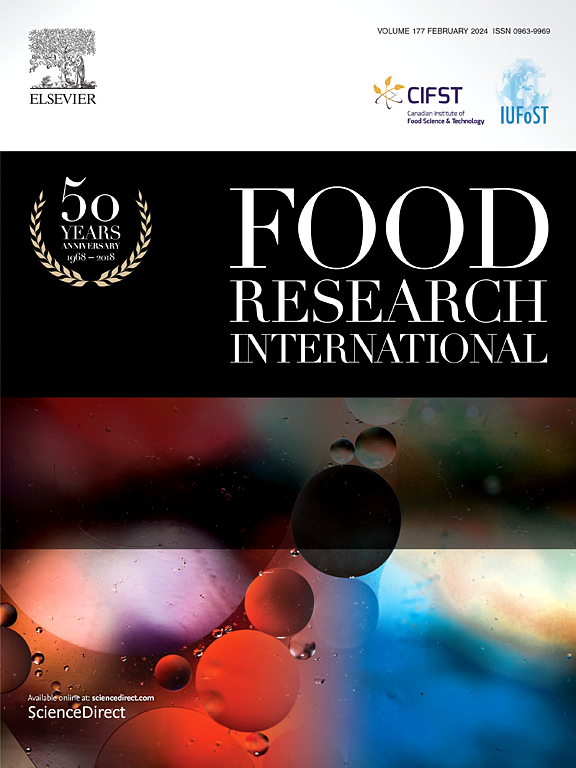甜味的分子基础与检测技术
IF 7
1区 农林科学
Q1 FOOD SCIENCE & TECHNOLOGY
引用次数: 0
摘要
提高食品的口感是现代食品科学研究的一个重要焦点,近年来受到越来越多的关注。在食品风味的基本成分中,甜味占据着至关重要的地位,它对消费者感官体验的影响是深远的,这推动了甜味剂作为食品添加剂的广泛使用,以调节当代食品工业的甜味。然而,其潜在机制尚未完全了解,提出了许多值得进一步调查的问题。在本文中,我们追溯了甜味研究的历史发展,探讨了甜味感知的机制,并对各种甜味剂的分子结构进行了全面分析。此外,我们还讨论了甜味检测技术的最新进展,特别关注GL1甜味传感器——一种成熟的甜味测量商业工具——以及新兴的味道传感器。通过解决这三个基本方面的甜味研究,这篇综述提供了一个全面的概述具有重要的科学和经济意义,有助于理论进步和实际应用。本文章由计算机程序翻译,如有差异,请以英文原文为准。

Molecular basis and detection technologies of sweetness
Enhancing food taste remains a pivotal focus of modern food science research and has drawn increasing attention in recent years. Among the fundamental components of food flavor, sweetness holds a position of utmost importance and its impact on consumers' sensory experiences is profound, which has driven extensive use of sweeteners as food additives for sweetness regulation in contemporary food industry. However, its underlying mechanisms are not yet fully understood, presenting numerous questions that warrant further investigation. In this review, we trace the historical development of sweetness research, explore the mechanisms underlying sweetness perception, and offer a comprehensive analysis of the molecular structures of various sweeteners. Furthermore, we discuss recent advancements in sweetness detection technologies, with a particular focus on the GL1 sweetness sensor—an established commercial tool for sweetness measurement—as well as emerging taste sensors. By addressing these three fundamental aspects of sweetness research, this review offers a comprehensive overview with significant scientific and economic implications, contributing to both theoretical advancements and practical applications.
求助全文
通过发布文献求助,成功后即可免费获取论文全文。
去求助
来源期刊

Food Research International
工程技术-食品科技
CiteScore
12.50
自引率
7.40%
发文量
1183
审稿时长
79 days
期刊介绍:
Food Research International serves as a rapid dissemination platform for significant and impactful research in food science, technology, engineering, and nutrition. The journal focuses on publishing novel, high-quality, and high-impact review papers, original research papers, and letters to the editors across various disciplines in the science and technology of food. Additionally, it follows a policy of publishing special issues on topical and emergent subjects in food research or related areas. Selected, peer-reviewed papers from scientific meetings, workshops, and conferences on the science, technology, and engineering of foods are also featured in special issues.
 求助内容:
求助内容: 应助结果提醒方式:
应助结果提醒方式:


